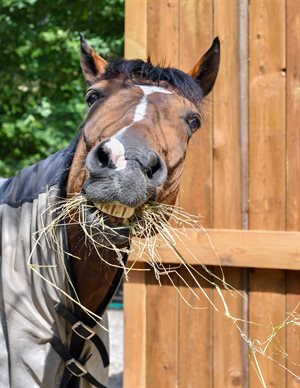|

When it comes to horse feed, it's important to get to know the recommended feeding rates on the back of the packaging.
Why? Because complete or balanced feeds have a feeding rate that is matched to a horse's vitamin and mineral requirement.
This is particularly of interest in spring, a season where owners tend to cut back the volume of hard feed as a result of growing pasture.
Simply put, the horse doesn't need the amount of conditioning that the hard feed was supplying in winter. But what the horse does still need, is vitamins and minerals from its diet.
If an owner feeds less than the recommended feeding rate, then the horse could be short-changed on nutrients. Thankfully the fix is fairly simple, as Hygain Nutrition Advisor Holly Mills explains…
"Hygain has a range of formulations to meet the changing workloads, lifestages and living situations of a horse." Holly says, "If you're reducing the amount of feed, it's advisable to either top up the feed with a vitamin & mineral supplement, or transition to a feed that is better suited to spring -What I mean here is a feed that supplies the necessary nutrients, without adding weight.
"Take for example, a bag of Hygain Zero. This is a low starch feed with a feeding rate that might be 2-4kg a day, depending on the horse's weight and workload. It's a fantastic feed that lots of horses do well on. But for some, the daily feeding rate might still be too much feed -Especially for the easy keepers. A horse that is tracking upwards in condition during spring might be better suited to a more concentrated feed like Hygain Meta Safe, which has a daily rate between 0.5-1kg for the average horse. That's the key difference between Zero and Meta Safe: Zero is a full feed and Meta Safe is a concentrate.
"One point to bear in mind with more concentrated feeds is that they'll often have a higher price compared to less concentrated feeds. The bags are the same weight, so why is the price different? Well, for the most part, you're not comparing "apples with apples." The more concentrated the feed, the less you need to feed and the longer the bag lasts. Try to keep in mind the daily cost based on the feeding rate. Sure you can use a calculator on your phone, but you can also speak to an equine nutritionist or the feed company. Ask questions, do your homework, and you'll find it that much easier to keep your horse at a healthy weight."
This article was written in conjunction with Hygain.
READ THE LATEST NEWS ARTICLES HERE

|

